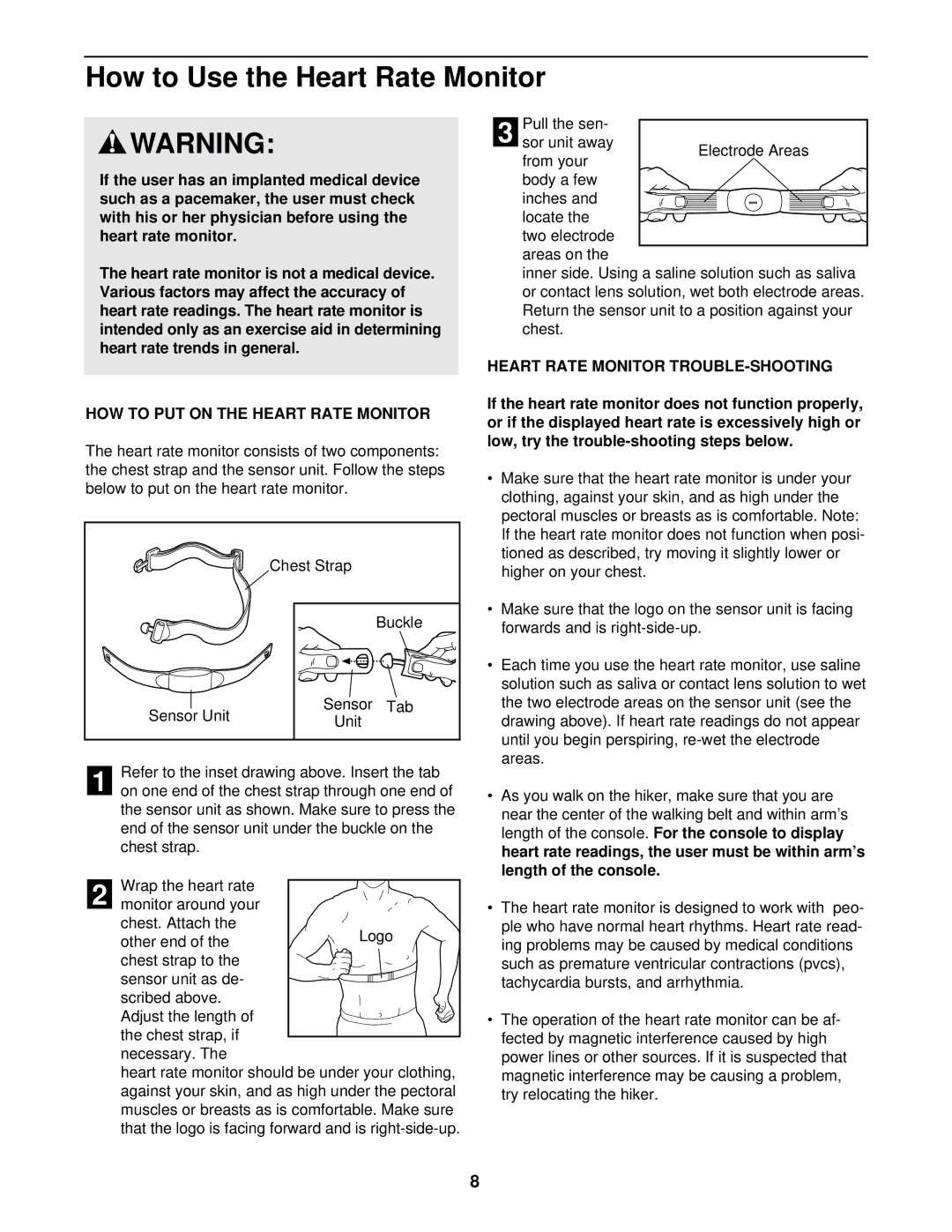
How to Use the Heart Rate Monitor
![]() WARNING:
WARNING:
If the user has an implanted medical device such as a pacemaker, the user must check with his or her physician before using the heart rate monitor.
The heart rate monitor is not a medical device. Various factors may affect the accuracy of heart rate readings. The heart rate monitor is intended only as an exercise aid in determining heart rate trends in general.
HOW TO PUT ON THE HEART RATE MONITOR
The heart rate monitor consists of two components: the chest strap and the sensor unit. Follow the steps below to put on the heart rate monitor.
Chest Strap
Buckle
| Sensor Unit | Sensor | Tab |
| Unit |
| |
|
|
| |
1 | Refer to the inset drawing above. Insert the tab | ||
on one end of the chest strap through one end of | |||
| the sensor unit as shown. Make sure to press the | ||
| end of the sensor unit under the buckle on the | ||
| chest strap. |
|
|
2 | Wrap the heart rate |
|
|
monitor around your |
|
| |
| chest. Attach the | Logo | |
| other end of the | ||
|
|
| |
| chest strap to the |
|
|
| sensor unit as de- |
|
|
| scribed above. |
|
|
| Adjust the length of |
|
|
| the chest strap, if |
|
|
| necessary. The |
|
|
| heart rate monitor should be under your clothing, | ||
| against your skin, and as high under the pectoral | ||
| muscles or breasts as is comfortable. Make sure | ||
| that the logo is facing forward and is | ||
3 Pull the sen- sor unit away from your
body a few inches and
locate the two electrode
areas on the
inner side. Using a saline solution such as saliva or contact lens solution, wet both electrode areas. Return the sensor unit to a position against your chest.
HEART RATE MONITOR TROUBLE-SHOOTING
If the heart rate monitor does not function properly, or if the displayed heart rate is excessively high or low, try the
•Make sure that the heart rate monitor is under your clothing, against your skin, and as high under the pectoral muscles or breasts as is comfortable. Note: If the heart rate monitor does not function when posi- tioned as described, try moving it slightly lower or higher on your chest.
•Make sure that the logo on the sensor unit is facing forwards and is
•Each time you use the heart rate monitor, use saline solution such as saliva or contact lens solution to wet the two electrode areas on the sensor unit (see the drawing above). If heart rate readings do not appear until you begin perspiring,
•As you walk on the hiker, make sure that you are near the center of the walking belt and within arm’s length of the console. For the console to display heart rate readings, the user must be within arm’s length of the console.
•The heart rate monitor is designed to work with peo- ple who have normal heart rhythms. Heart rate read- ing problems may be caused by medical conditions such as premature ventricular contractions (pvcs), tachycardia bursts, and arrhythmia.
•The operation of the heart rate monitor can be af- fected by magnetic interference caused by high power lines or other sources. If it is suspected that magnetic interference may be causing a problem, try relocating the hiker.
8
